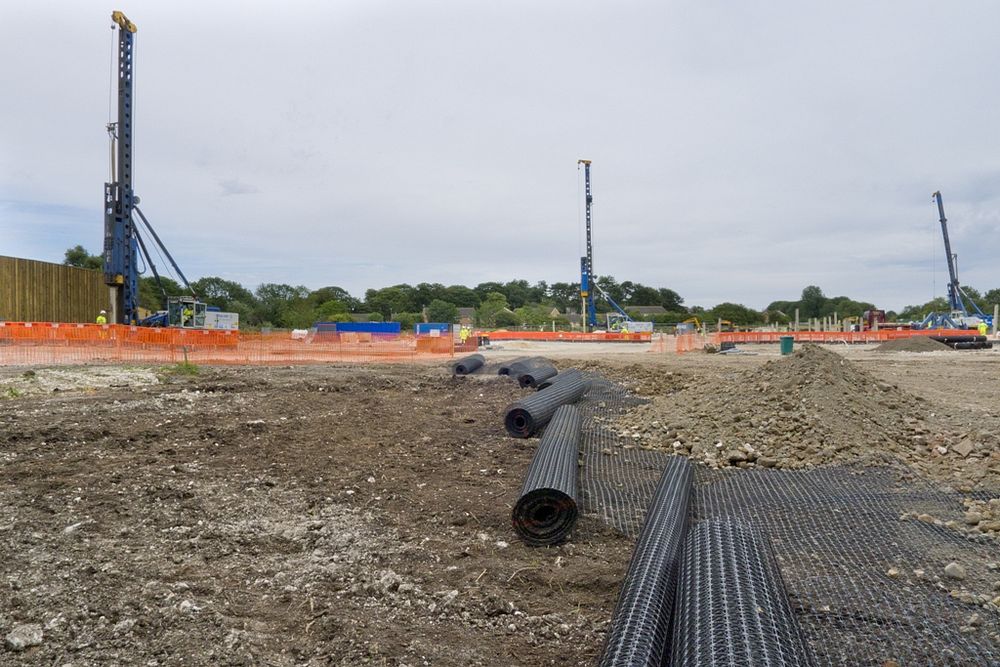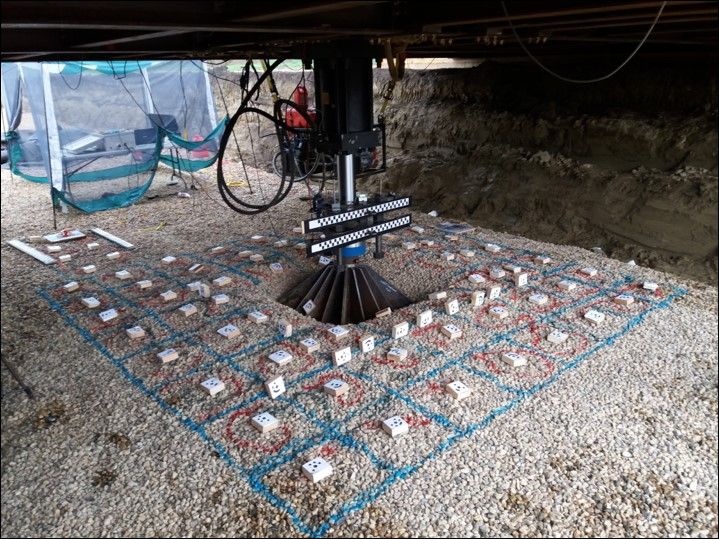Blogginlägg -
Plattbelastningstest: Fakta
What is plate load testing and why is it needed?
Plate load testing involves the increasing loading of a circular steel plate placed on a ground surface and measuring the settlement induced, to determine bearing capacity. The method is commonly used to test working platforms but it is crucial to carry out the testing correctly, to ensure the safety criteria are met.
Andrew Lees discusses the importance of using large plates when testing your working platform.
Why does plate size matter?
Plate load tests typically use 0.3m or 0.6m diameter plates, with the size of the pressure bulb created (and therefore the depth of ground being tested) being related directly to the size of the plate – typically twice its diameter (so about 0.6m depth for a 0.3m diameter plate).
The key thing to remember is that, if two tests using different size plates are carried out on the same piece of ground, the results will differ, as the volume of soil being tested is different.
Plate load testing of working platforms
This can cause issues when plate load testing a working platform, where there are two distinct layers: a stronger, compacted granular material layer over a weaker subgrade.
If the platform is thicker than 0.6m, then a 0.3m diameter plate load test will only determine the bearing capacity and settlement characteristics of the granular layer and not of the weaker ground beneath.
While these results can be used for quality control – to check the platform has been compacted correctly and meets specification – they are inadequate for assessing the safe bearing capacity of the platform.

Working platforms incorporating geogrids are a proven way to safely support heavy construction equipment, such as pilling rigs and support cranes as part of civil engineering temporary works.
A better approach – and one Tensar advises – is to use a larger plate with a diameter closer in size to the width of the load imposed by the construction equipment.
This means the test will create a pressure bulb similar in size, and depth, to the one created by a rig’s tracks. As a result, the settlement characteristics of both the platform and subgrade will be measured, giving a more accurate assessment of ultimate (and safe) bearing capacity of the platform.
Plate load testing in action
Tensar teamed up with the University of Saskatchewan in Canada to carry out full-scale plate load tests on a trial section of granular working platform on a clay subgrade, which you can read more about here.

Monitored plate load field trial carried out on the Canada Prairies.
These full scale field trials helped us verify our new T-Value design method for working platforms stabilised with geogrid.
Want to learn more about Tensar's T-Value Methodology?
Access: The T-Value Guide to Temporary Works Design
Watch the Webinar: The NEW Tensar T-Value Methodology for Working Platforms
Tensar International | www.tensar.se | info@tensar.se
Relaterade länkar
Ämnen
- Miljö, energi